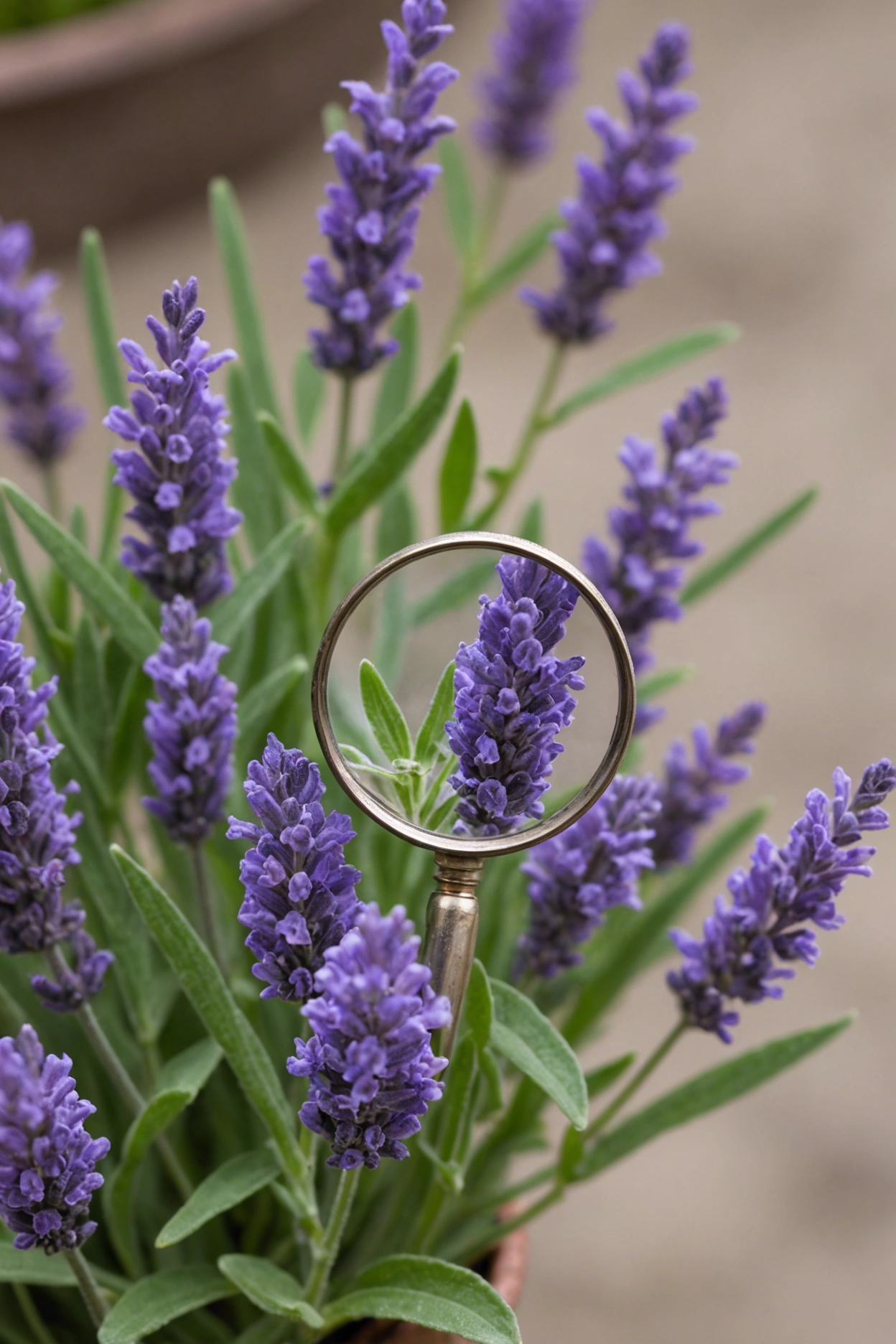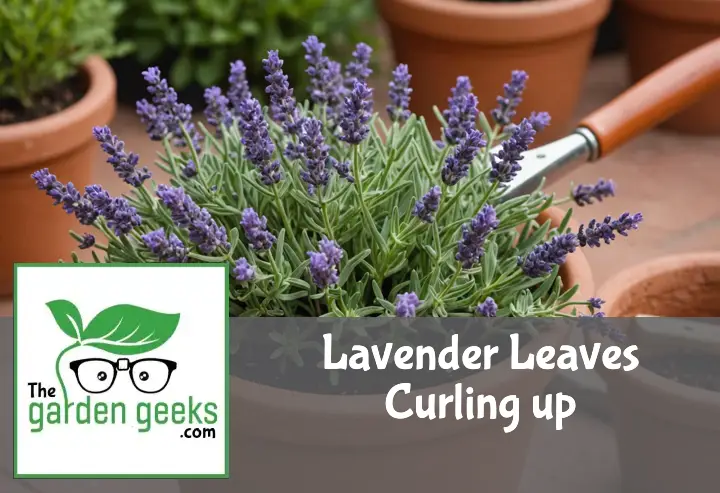Did you know that lavender, famous for its mesmerizing fragrance and medicinal properties, can sometimes behave like the sensitive Lavender Leaves Curling Up plant when under stress? Yes, it’s true!
Just like humans, plants too communicate their distress through visible signs. In the case of lavender, one such sign is its leaves curling up.
So next time your lavender plant’s leaves start to curl up, don’t panic! It’s just the plant’s way of saying it needs a little extra care. Keep reading about Lavender Leaves Curling Up to understand more about this phenomenon.
Quick Answer
- Lavender leaves curling up is often due to environmental stress, pests, diseases, overwatering or nutrient deficiencies.
- Diagnose the issue by visually inspecting for pests and disease signs, testing soil for nutrient imbalance, and assessing watering patterns and drainage.
- Revive your lavender by following a step-by-step guide tailored to the diagnosed problem.
- Prevent future curling by implementing measures such as proper watering techniques, pest control methods and ensuring balanced nutrients in the soil.
- Avoid common mistakes in caring for lavender plants to maintain their health.

What Causes Lavender Leaves to Curl Up?
Environmental Stress Factors
When lavender plants face too hot or too cold weather, they freak out a bit. Think of it like when you get super chilly and curl up in a blanket. Lavender leaves do something similar; they curl up! This is their way of saying, “I’m not happy with this weather.” If the sun’s blasting all day long, or if frosty nights are more common than not, your lavender is going to show its discomfort through those curled leaves.
Pests and Diseases
Okay, imagine your lavender plant is like a superhero. Now, even superheroes have their weaknesses, right? For lavenders, it’s certain pesky pests and mean diseases. Aphids and whiteflies are like the villains here. They suck on the plant juices, making the leaves curl up as a distress signal. Then there are diseases like lavender leaf curl disease, which sounds exactly like what it does – makes the leaves curl! It’s like the plant catching a cold that makes its leaves go all wonky.
Watering Issues
Watering your lavender plant can be tricky. It’s kind of like Goldilocks – not too much water, not too little, but just right. When you drown them in water (overwatering), their roots can’t breathe and start to rot. This messes with the leaves, making them curl up as an SOS signal. On the flip side, if you forget about watering (underwatering), your lavender will get super thirsty. The leaves curl up because they’re trying to save every drop of moisture they have left.
Nutrient Deficiencies
Lavenders aren’t greedy plants but give them too little food (nutrients), and they’ll let you know by curling up their leaves. It’s their way of throwing a tantrum for missing out on essential snacks like nitrogen or iron. Without these nutrients, your lavender can’t perform its best magic trick – staying healthy and looking fabulous. So when you see those leaves curling, it might be time to check if your soil’s pantry needs restocking.
How to Diagnose Curling Lavender Leaves
Diagnosing curling lavender leaves is crucial. It involves looking closely at the plant, testing soil, and checking water habits.
Visual Inspection for Pests and Disease Signs
First off, grab a magnifying glass if you have one. You’re going detective mode on your lavender. Look under the leaves and around the stems. Tiny bugs? Weird spots? These are clues. Pest signs on lavender like spider mites or aphids love to make a feast of your plants. And diseases? They leave their mark too – think of yellow or brown spots that weren’t there before.
Now, if you see anything unusual, don’t panic! Identifying the culprit is step one. Different pests and diseases need different fixes. For example, a soft spray of water might knock off mites, while fungal issues could require removing affected parts.
Remember, it’s not just about spotting the bad guys. Check for natural defenders like ladybugs too. They’re your allies in keeping pests in check without chemicals.
Soil Testing for Nutrient Imbalance
Soil isn’t just dirt; it’s a buffet for your plants. But what if it’s serving the wrong menu? That’s where soil testing comes into play. It’s like doing a health check-up for your garden’s ground.
Grab a soil test kit from your local garden center or online. Simple tests can tell you a lot about what’s missing or what’s too much in your soil buffet. Lavenders love their space with specific nutrients, not too much nitrogen though – that can lead to soft growth instead of strong, fragrant flowers.
If results show an imbalance, don’t worry! Adding compost or specific minerals can get things back on track. Think of it as adjusting the seasoning in a recipe until it’s just right.
Assessing Watering Patterns and Drainage
Water is life but too much or too little can send plants into a spiral of stress – curling leaves included! Lavenders are like those folks who enjoy their drinks neat – they prefer well-drained sips over waterlogged gulps.
Check how often you’re watering and how quickly water drains away after rain or watering sessions. If puddles linger longer than they should, consider improving drainage by adding sand or organic matter to the soil.
On flip side, underwatered lavenders throw tantrums by curling up their leaves – it’s their way of saying “I’m thirsty!” Adjust watering patterns to ensure they receive consistent moisture especially during hot spells but avoid overdoing it.



Step by Step: Reviving Your Curling Lavender Leaves


If your lavender’s leaves are starting to curl up, don’t panic! It’s a sign that your plant is not happy, but with a little love and care, you can bring it back to its full glory. Here’s a simple guide on how to revive those curling leaves and ensure your lavender thrives.
-
Check the watering schedule: Lavender prefers drier conditions. If you’ve been overwatering, let the soil dry out before giving it another drink. Stick your finger into the soil; if it feels wet below the surface, wait a bit longer.
-
Evaluate the potting mix: Lavender loves well-draining soil. If your plant is in heavy or clay-rich soil, consider repotting it into a mix designed for succulents or cacti, which promotes better drainage.
-
Assess sunlight exposure: These plants adore the sun! Make sure your lavender gets at least 6 hours of direct sunlight daily. If it’s indoors or in a shady spot, move it to where it can bask in plenty of natural light.
-
Look for pests: Aphids and spider mites can cause leaf curling. Inspect under the leaves and along the stems for any signs of these tiny critters. If you find any, gently wash them off with water or use an organic insecticidal soap.
-
Provide nutrients carefully: Over-fertilization can harm lavender more than help it. If you haven’t fertilized in a while, consider applying a balanced, slow-release fertilizer formulated for flowering plants—but only once at the start of the growing season.
-
Prune properly: Sometimes all a plant needs is a good trim to encourage healthy growth. Remove any dead or dying foliage and shape your lavender to promote air circulation and new growth.
-
Adjust humidity levels: Lavender doesn’t like too much humidity. If you’re growing it indoors where air tends to be moist, use a dehumidifier or place it in a room with better airflow.
-
Be patient: After making these adjustments, give your plant some time to recover. New growth should be healthy and vibrant if you’ve addressed all potential issues correctly.
Preventative Measures for Healthy Lavender Plants
Keeping your lavender plants happy and healthy doesn’t have to be a mystery. It’s all about giving them what they love and keeping away the stuff they don’t. Here are some top tips to prevent those leaves from curling up and ensure your lavender thrives.
-
Water wisely: Lavender doesn’t like wet feet! Make sure you’re watering only when the soil is dry to the touch. Over-watering is a no-no, as it can lead to root rot, which is pretty much a death sentence for these drought-loving plants.
-
Let them bask in the sun: These plants are sun worshippers. Plant them in a spot where they get at least 6 hours of direct sunlight each day. More sun equals happier lavender.
-
Good drainage is key: Lavender hates soggy conditions. Plant them in well-draining soil or, if you’re using pots, make sure there are drainage holes at the bottom. No swimming pool vibes allowed here!
-
Prune like a pro: After flowering, give your lavender a good haircut, cutting back about one-third of the plant. This keeps it from getting too woody and encourages fresh growth next season.
-
Keep an eye out for pests: Aphids and whiteflies can sometimes be attracted to lavender. If you spot these pesky critters, gently wash them off with water or use an insecticidal soap that’s safe for plants.
-
Feed them right: Lavender isn’t a big eater but appreciates a little boost now and then. Use a slow-release fertilizer at the beginning of the growing season to keep them happy without overfeeding.
By following these simple steps, you’ll create an environment where your lavender can flourish without those troublesome curled leaves making an appearance.


Common Mistakes in Caring for Lavender Plants and How to Avoid Them
| Common Mistakes | Consequences | How to Avoid |
|---|---|---|
| Overwatering | Root rot, yellow leaves, leaf curling | Water only when the top inch of soil is dry |
| Underwatering | Wilting, stunted growth | Keep soil consistently moist but not soggy |
| Too much shade | Leggy plants, poor blooming | Plant in full sun or an area with at least 6 hours of sunlight daily |
| Poor soil drainage | Root rot, leaf curling | Use well-draining soil and consider raised beds or containers if necessary |
| Over-fertilizing | Leaf burn, reduced flowering | Fertilize sparingly and only during active growing season |
| Incorrect pruning | Reduced flowering, leggy growth | Prune after flowering and avoid cutting into old wood |
| Planting too deeply | Root rot, poor establishment | Plant with the top of the root ball level with the ground surface |
| Neglecting pests and diseases | Damage to plant health and appearance | Monitor regularly for signs of pests or disease and treat promptly. |


